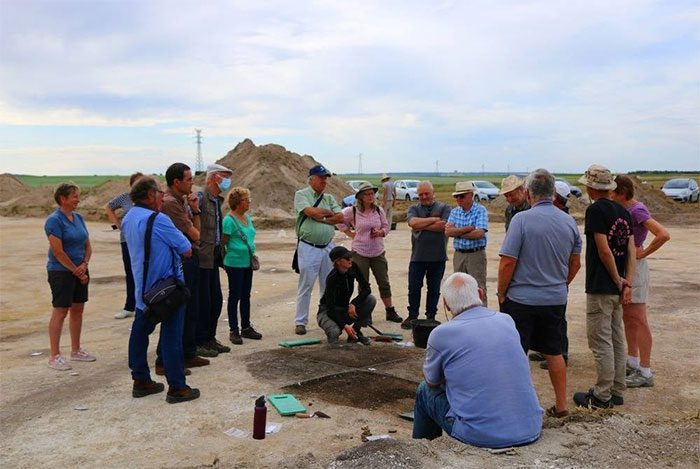At the expansive archaeological site of Marais de Saint-Gond, dating back to the Neolithic period in northeastern France, archaeologists have recently uncovered traces of a long-term settlement, providing rare insights into the social organization of the area 150 years after the first flint stones were discovered.

French archaeologists have uncovered traces of a long-term settlement. (Photo: sinardaily.my)
The village was found when archaeologists discovered a trench used for fence installation in the municipality of Val-des-Marais, approximately 136 km from the capital, Paris. According to expert evaluations, this prehistoric structure encircles a hill, covering an estimated area of 1 hectare. During the archaeological activity, a building with an apse dome architecture was uncovered. This building is located near a large trash pit with a diameter of about 20 meters and several wells.
Remi Martineau, a researcher at the French National Center for Scientific Research (CNRS) who, along with his colleagues, discovered the village this summer, emphasized that this is the “missing piece” that the research team has been searching for. Martineau stated that this new discovery marks an important milestone, opening up understandings of the economic, social, and territorial organization of the Neolithic period. This researcher highlighted that the area exhibits a complete structure and that a social foundation appears to have existed since that time.
At Marais de Saint-Gond, archaeologists have identified 15 large flint mines covering an area of up to 450 hectares, along with 135 underground tunnels. Five alleys are enclosed by dolmens, ten axe-polishing tools, and fields that had controlled straw burning before cultivation have been identified since flint was first discovered a century and a half ago. Additionally, the archaeological team unearthed a small oval object made of mother-of-pearl, featuring two holes, possibly a precursor to a button, dating back 3,300 to 3,400 years.
The ongoing discoveries are the result of a research program led by CNRS, which has been implemented for the past 20 years. In the latest archaeological activity conducted in cooperation with the joint laboratory Artehis, the University of Bourgogne Franche-Comté, and the French Ministry of Culture, 50 participants, including French researchers, international scholars, and dozens of archaeology students were involved.
Researchers hope that the remaining part of the Marais de Saint-Gond archaeological site will also be well-preserved to facilitate many future excavations.


















































